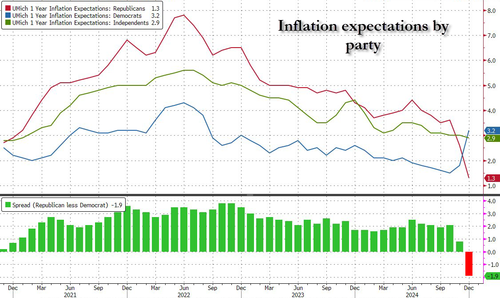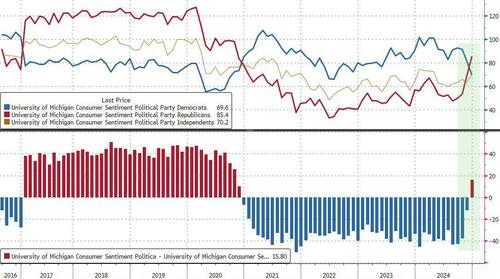Big Lots Announces It Will Start Going-Out-Of-Business Sale At All Stores
Authored by Jack Phillips via The Epoch Times,
Discount retail store chain Big Lots announced Thursday that it will initiate “going out of business” sales at all its remaining locations after it was unable to reach an agreement with an investment firm.
“In parallel with these efforts, the company is preparing to commence going out of business sales at all remaining Big Lots store locations in the coming days to protect the value of its estate,” the company said in a statement, which added that Big Lots will continue “to serve customers in-store and online, and will provide updates as available.”
Big Lots CEO Bruce Thorn said in a statement that Big Lots attempted to complete a sale of the company to Nexus Capital Management but it fell through. He said the company will, in the meantime, attempt to close the deal with Nexus or another party by early next month.
“We all have worked extremely hard and have taken every step to complete a going concern sale,” he said.
“While we remain hopeful that we can close an alternative going concern transaction, in order to protect the value of the Big Lots estate, we have made the difficult decision to begin the [going-out-of-business] process.”
Big Lots, headquartered in Columbus, Ohio, operates more than 1,400 stores across 48 states. The firm has closed a number of locations in recent months after it filed for Chapter 11 bankruptcy after having grappled with declining sales over the past few quarters, putting pressure on its balance sheet.
Big Lots had listed its assets and liabilities in the range of $1 billion to $10 billion, according to a filing with the bankruptcy court in Delaware, which showed creditors in the range of 5,001 to 10,000.
Under the previous agreement that fell through, Big Lots said in court that Nexus would serve as a “stalking horse bidder” in a court-supervised auction process, adding that the deal would close in the fourth quarter of 2024 if Nexus was deemed the winning bidder. A stalking horse bid is used as a starting or minimally accepted offer that other interested bidders must surpass if they want to buy the asset or the company.
Earlier this year, when confirming the company filed for Chapter 11 bankruptcy, Thorn blamed economic factors such as higher-than-normal inflation and other pressure points. Customers have been forced to change their spending behavior due to inflation, which has been sticky since the COVID-19 pandemic, his company said.
“The prevailing economic trends have been particularly challenging to Big Lots, as its core customers curbed their discretionary spending on the home and seasonal product categories that represent a significant portion of the company’s revenue,” the company said in a statement in September.
The company’s stock has declined by more than 98 percent in the past year. As of Thursday, Big Lots’ stock dropped another 7 percent, to about $0.09 per share. A year before, the stock had stood at around $7 per share.
Earlier this month, the U.S. Labor Department released a report showing that U.S. consumer prices increased in November by the most in seven months. The consumer price index rose by 0.3 percent last month, the largest gain since April after advancing 0.2 percent for four straight months, the Department of Labor’s Bureau of Labor Statistics said.
Tyler Durden
Fri, 12/20/2024 – 14:40
via ZeroHedge News https://ift.tt/tq1khsn Tyler Durden












